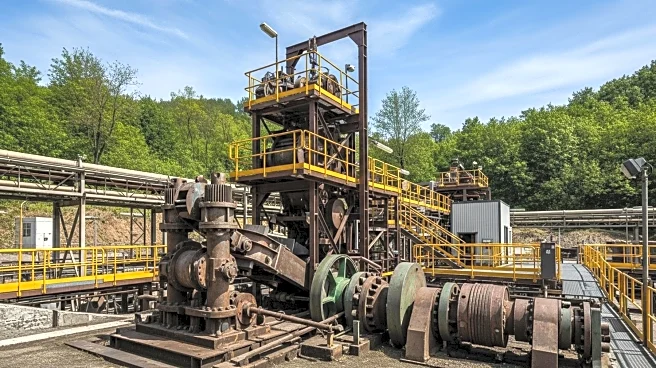What's Happening?
MAC Copper Limited is strategically positioning itself to capitalize on the growing demand for copper driven by the global energy transition. The company reported a 23% increase in copper production in Q2 2025, reaching 10,587 tonnes, while reducing C1 costs to $0.94 per pound. This surge in production is attributed to higher-grade ore and operational efficiencies at the CSA Mine. Despite a net loss of $76.7 million in the first half of 2025, MAC Copper has strengthened its liquidity position with $196 million in total liquidity as of July 2025. The company is focusing on expanding existing assets, such as the Merrin Mine, to meet the increasing demand for copper in electric vehicles, solar panels, and wind turbines.
Why It's Important?
Copper is essential for the clean energy transition, with electric vehicles requiring significantly more copper than traditional combustion engines. MAC Copper's focus on low-cost, high-grade production aligns with this demand surge, positioning the company to benefit from the projected growth in the global copper market, which is expected to reach $339.95 billion by 2030. The company's strategic initiatives, including cost optimization and ESG integration, enhance its appeal to sustainability-focused investors. However, supply constraints, geopolitical instability, and the long lead time for new mines pose challenges to meeting demand.
What's Next?
MAC Copper plans to continue expanding its production capabilities, with the Merrin Mine expected to contribute significantly to its output by 2026. The company is also navigating potential regulatory and shareholder approvals for a proposed $1 billion acquisition by Harmony Gold. Investors will be closely monitoring the success of these expansion projects and the acquisition outcome, as they could significantly impact MAC Copper's future growth and market position.
Beyond the Headlines
The clean energy transition is reshaping the mining industry, with companies like MAC Copper adapting to new market dynamics and sustainability goals. The company's efforts to reduce its Total Recordable Injury Frequency Rate and invest in community projects reflect a broader trend towards integrating ESG principles into business operations. These initiatives not only address operational risks but also align with global decarbonization policies, potentially influencing investor perceptions and market valuations.











